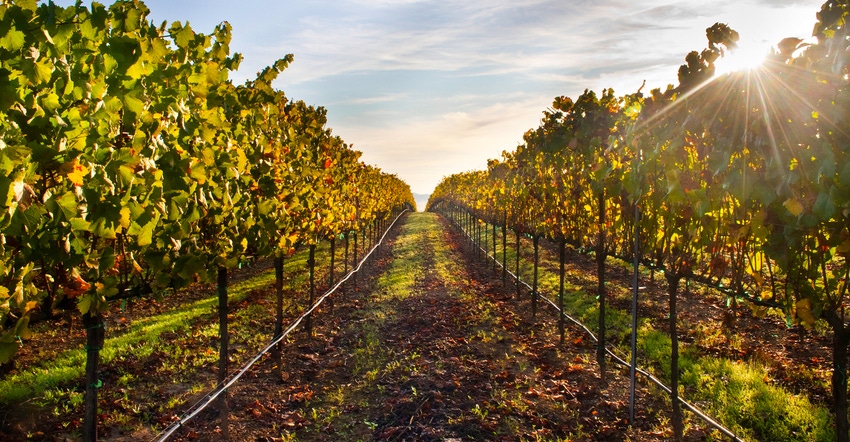November 15, 2019

Grapes, both table and wine, are often raised in drier climates, but what about raising grapes in the desert? The University of Nevada, Reno, has a long history of work to find the best grapes to raise in the state’s deserts. That work is expanding with the help of a new partnership and a three-year, $167,809 grant from USDA and the state of Nevada through the college’s Nevada Agricultural Experiment Station.
Earlier this year, Grant Cramer, a biochemistry professor with the Experiment Station, and M.L. Robinson, a professor and horticulture specialist with the college's Cooperative Extension unit, partnered with Oregon State University to research the hormone abscisic acid and its role in drought- and salt-tolerant grapes.
The new grant allows the researchers to continue collecting data for grape hybrid trials already being conducted at the Southern Nevada Research Center and Demonstration Orchard. The hybrids were grown as part of the Table and Wine Grape Project. That work began as a partnership with Andy Walker, a grapevine breeder with the University of California, Davis. Together, the researchers tested a range of varieties, including some discovered by Walker, as grape rootstock that grows well in dry, salty soil.
Some grapes work in Nevada
The UC Davis project ended in 2018 with positive results, showing that many winegrape varieties work in southern Nevada. Many grew well without needing fertilizer, and some have been provided to local winemakers.
Robinson notes that the results show “we can produce drought-resistant, high-quality grapes for wine. They taste good for eating as a snack, too.”
The team is compiling research results for publication, and Robinson is working with Extension Master Gardeners to harvest and provide some of this year’s 22 winegrape varieties and two table grape varieties to local wineries and residents. In addition, the group is providing classes on harvesting and processing the fruit.
With the new partnership, Grant and Robinson are aiming to gain more insight into abscisic acid and how it works. Once they figure out why the hormone reacts differently in different grape varieties when exposed to low water levels and high salt soils, they can use the information to fine-tune grape breeding.
Source: University of Nevada, Reno. The source is solely responsible for the information provided and is wholly owned by the source. Informa Business Media and all its subsidiaries are not responsible for any of the content contained in this information asset.
You May Also Like




